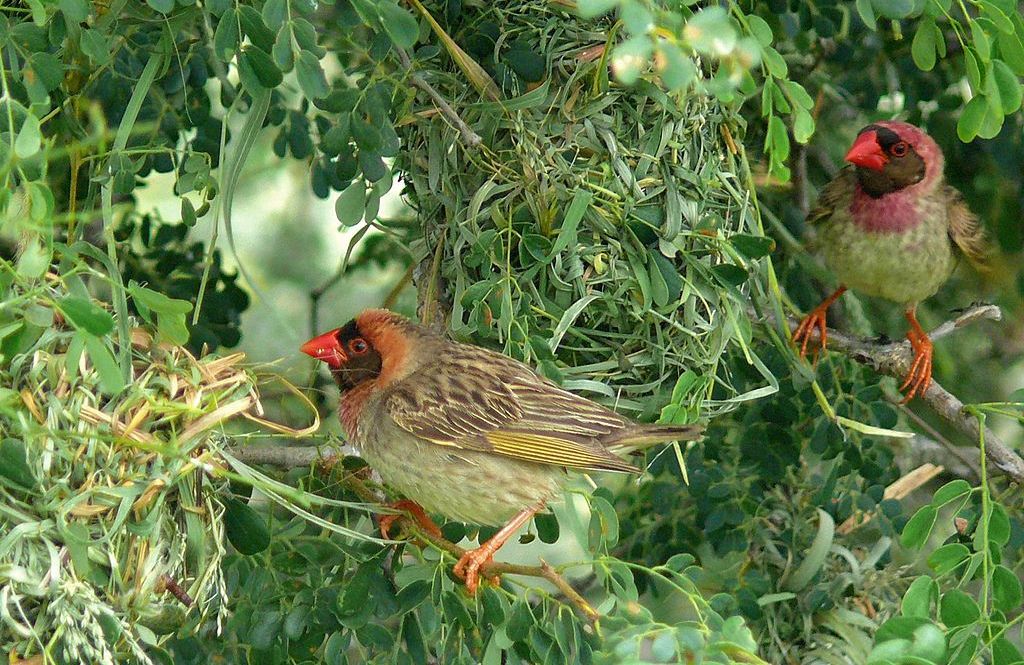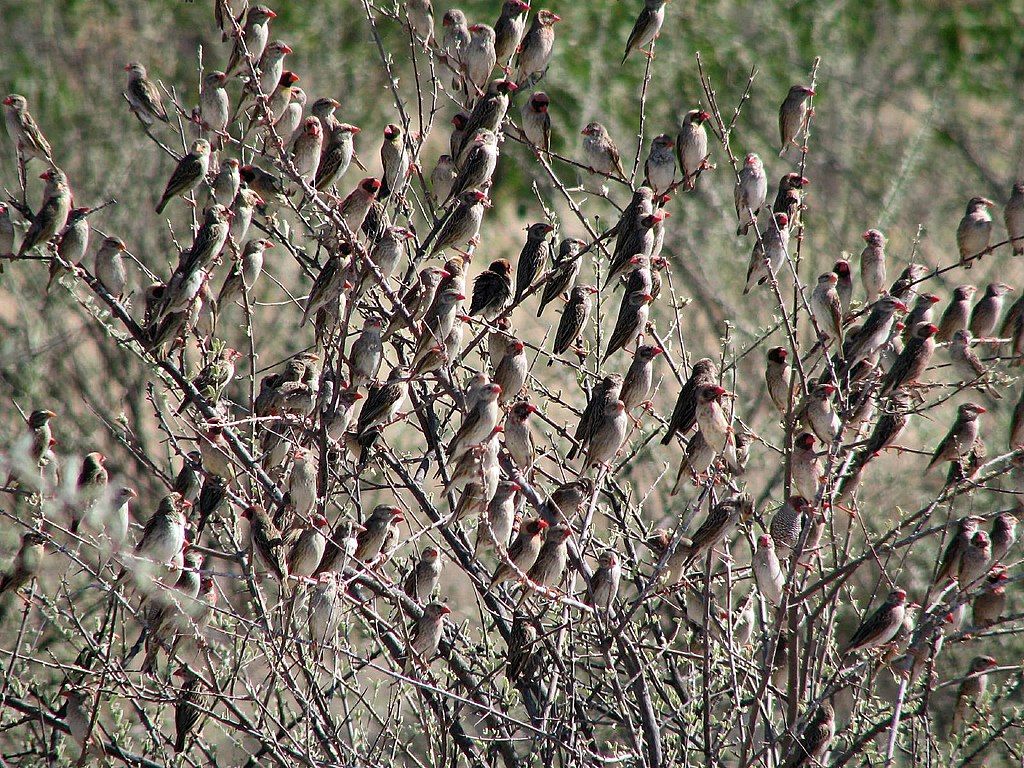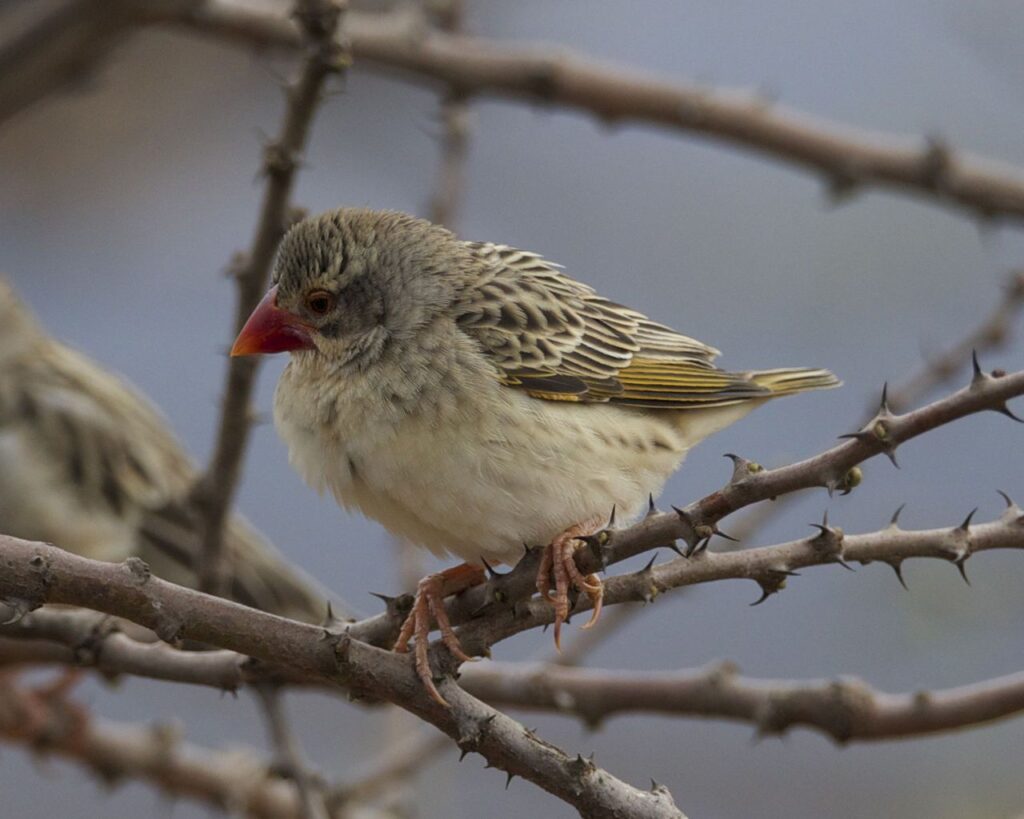
The most numerous wild bird on earth, estimated at 1.5 billion individuals, is the red-billed quelea (Quelea quelea) of sub-Saharan Africa. This very social weaver finch migrates and nests in flocks that number in millions.

When the flocks get going they resemble swarms of locusts.
video from Antero Topp on YouTube
Red-billed queleas eat mostly grain and seeds. As they feed on the ground the flock leapfrogs from back to front like a rolling cloud.
video from @JimGriggs on YouTube
In Africa they are so well known as flocks that it’s hard to think of them as individuals. Two males are pictured above. Here’s a female.

Unfortunately their numbers and flocking behavior get them into trouble. When their natural food sources run dry they change their focus to cultivated fields. A flock of two million can eat 20 tons of grain in a day, thus …
This species is a major pest of cereal crops, and huge efforts have been expended by national and international agencies on lethal control and attempts to reduce population numbers by use of explosives, petrol bombs and aerial spraying of [organophosphate] avicides; in South Africa up to 21 million reported killed in a single month, with annual kill estimates of up to 180 million.
Control operations, however, probably do no more than replace naturally occurring mortality, and there is a significant adverse impact on other species, which are poisoned directly or die after eating dead queleas.
— Birds of the World, Red-billed quelea
A much more successful control measure than killing them, though very labor intensive, is to actively make noise in the fields and scare the birds away.
After more than 70 years of control measures that kill hundreds of millions of birds per year, the red-billed quelea population has grown.
p.s. A video at this link shows all aspects of the red-billed queleas lives but is grisly at the end.
(photos from Wikimedia Commons, videos embedded; click on the captions to see the originals)
Hello! My family was in Armstrong county yesterday, and we spotted the pictured bird. Originally, it was standing on the edge of the roadway, then took flight as we approached. It was huge, mottled, had pantaloons, and bright yellow feet. We’re guessing it was a juvenile Golden Eagle. (We are not learned bird watchers, but we love nature.) If this is correct, is it most likely in migration, or is it likely the bird will winter in that area? Are Golden Eagles very commonly seen migrating or wintering in this area? I’d like to share photos and location, but can’t get them to attach.
Thank you!
Amy Miller
Golden eagles are very unusual in Armstrong County. I will contact you for the photos